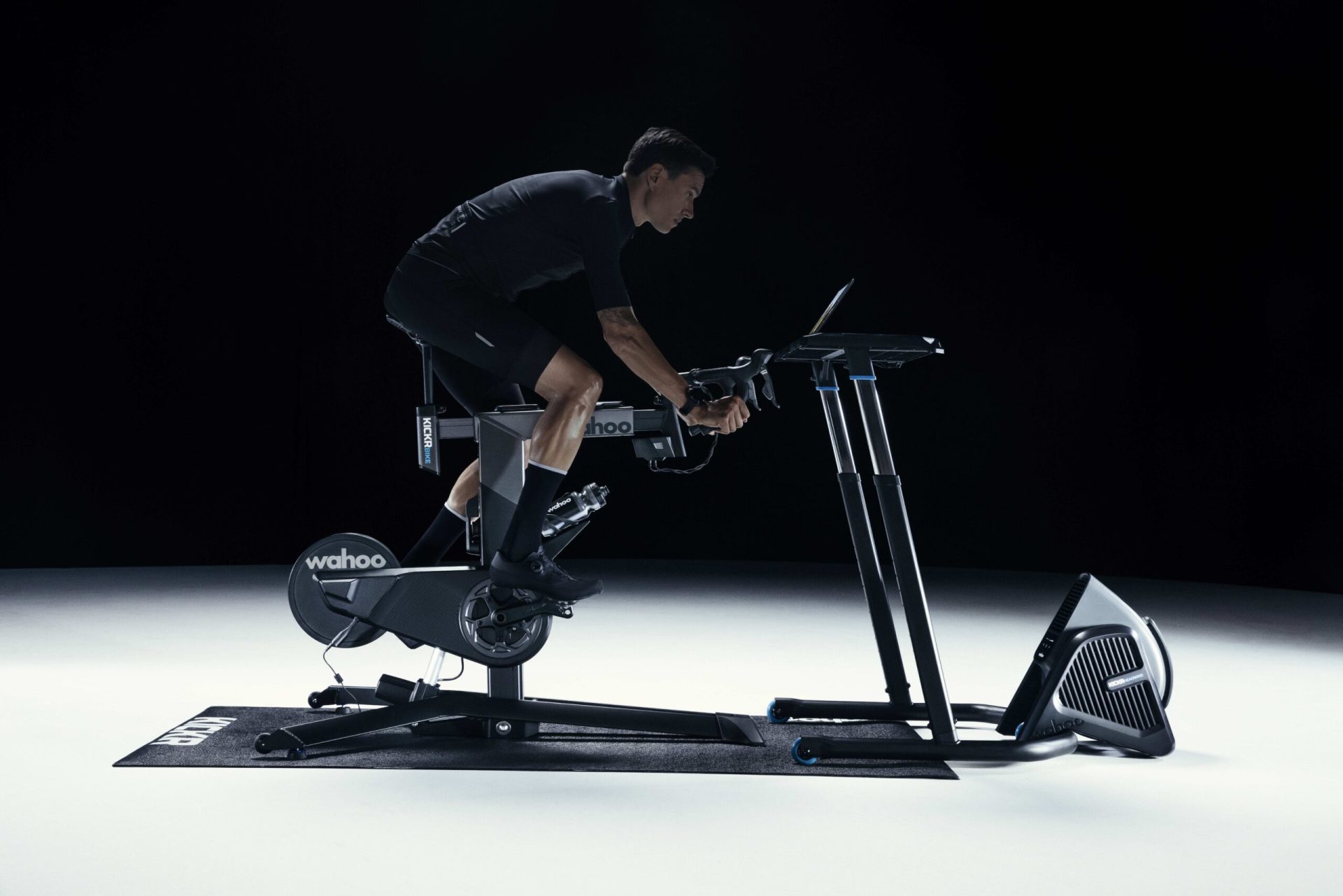
Indoor cycling is exploding in popularity and is projected to keep growing for the next ten years! Ride-simulating software like Wahoo X makes riding indoors as fun as playing video games. Many other people are also getting into indoor cycling for its cardiovascular, low-impact health benefits.
Whatever your reason, if you’re starting indoor cycling resistance training, you have two main options for equipment – an indoor trainer or a stationary exercise bike.
An indoor trainer is a motor designed to attach to a road or mountain bike and provide resistance. A stationary bike is a structure that attaches pedals to a system of resistance but lacks road-ready wheels.
These two options each come with their own advantages and disadvantages, making them appropriate for different kinds of riders. To help you decide which system to use, we’ll break down the differences.
Adjustability
How many indoor cyclists are in your house?
Stationary bikes are a one-size-fits-all option that adjusts to fit riders of different heights.
Indoor trainers may require you to install a different bike on the trainer each time you want to change riders. If you have multiple riders in your household, a stationary bike may be preferable.
Resistance Source
How much do you care about realistic ride feel?
For stationary bikes, resistance sources can be wind, electromagnetic, or direct contact. Direct contact stationary bikes are quite common and less expensive, but they break more easily because they rely on mechanical rubbing to create resistance and they don’t feel like outdoor cycling. Electromagnetic options are more expensive but are much quieter, more realistic, and don’t require regular repairs.
For trainers, they are liquid, wind, or electromagnetic. Wind and liquid sources offer somewhat realistic gradual resistance but can be hard to get used to and may result in leaking trainers. Smart electromagnetic trainers such as Wahoo’s KICKR model resistance output that’s similar to what you experience on the road.
Ease of Storage
Are you going to pack your system away or leave it out?
Stationary bikes are heavier and harder to transport. Their large metal frames make them harder to store and they usually require a dedicated workout space. The extra weight leads to more stability and allow for sprinting-style workouts.
Indoor trainers split the weight between the bike and the trainer, making it much easier to break down and stash them away inside your house or take on the road.
Setup Time
Do you want to avoid tinkering with your bike?
Stationary bikes take less work to set up and they require minimal maintenance.
If you don’t have a dedicated bike installed on your personal trainer or you regularly disassemble it, using an indoor will take a significant amount of setup time. If you plan on removing your bike from the trainer often, we recommend using a wheel-on trainer like Wahoo’s KICKR SNAP because it is easier to install and uninstall than a direct drive trainer.
Posture
Do you want a realistic, road-riding position or a casual, comfortable position?
Stationary bikes come in traditional bike posture, more upright positions, and even reclined positions, giving you more options for comfort.
If you’re using a bike trainer, you will be in a traditional body-forward over-the-handlebars posture. This will better prepare you for road racing, but may also lead to more body aches.
Third-Party Support
Traditionally stationary bikes don’t offer as much third-party app support and are designed to be programmed through their own interfaces. However, there are a growing number of stationary smart bikes like Wahoo’s KICKR BIKE that have more connectivity and are not so stationary with the ability to physically adjust the position of the BIKE with grade simulation technologies to replicate the sensation of riding outdoors– including downhill simulation that allows you to maintain speed on virtual descents..
Indoor trainers generally offer greater programming options through third-party integration. Using third-party programs enables you to import workouts beyond the preset options, hook up to cycling simulators like Wahoo RGT, and take full control of your resistance setting modes.
Make a Quick Decision!
Still undecided between a trainer or an indoor bike?
Try our quick decision guide:
If you want the most entertaining option – get a smart trainer or smart bike like the Wahoo KICKR BIKE.
If you want the most technologically advanced option – get a smart bike like the Wahoo KICKR BIKE.
If you want a device that takes up minimal space/is easy to disassemble and store – get a wheel-on trainer like Wahoo’s KICKR SNAP or the KICKR Smart Trainer.
If you want the cheapest option – get a low-cost direct-contact exercise bike but be aware that you will most likely have to compromise on smart features and reliability.
If you want a device that simulates cycling outside – get a smart trainer or smart bike like the Wahoo KICKR or KICKR BIKE.
If you want a the most comfortable option – get the KICKR BIKE and adjust the fit setting to the comfort setting.


